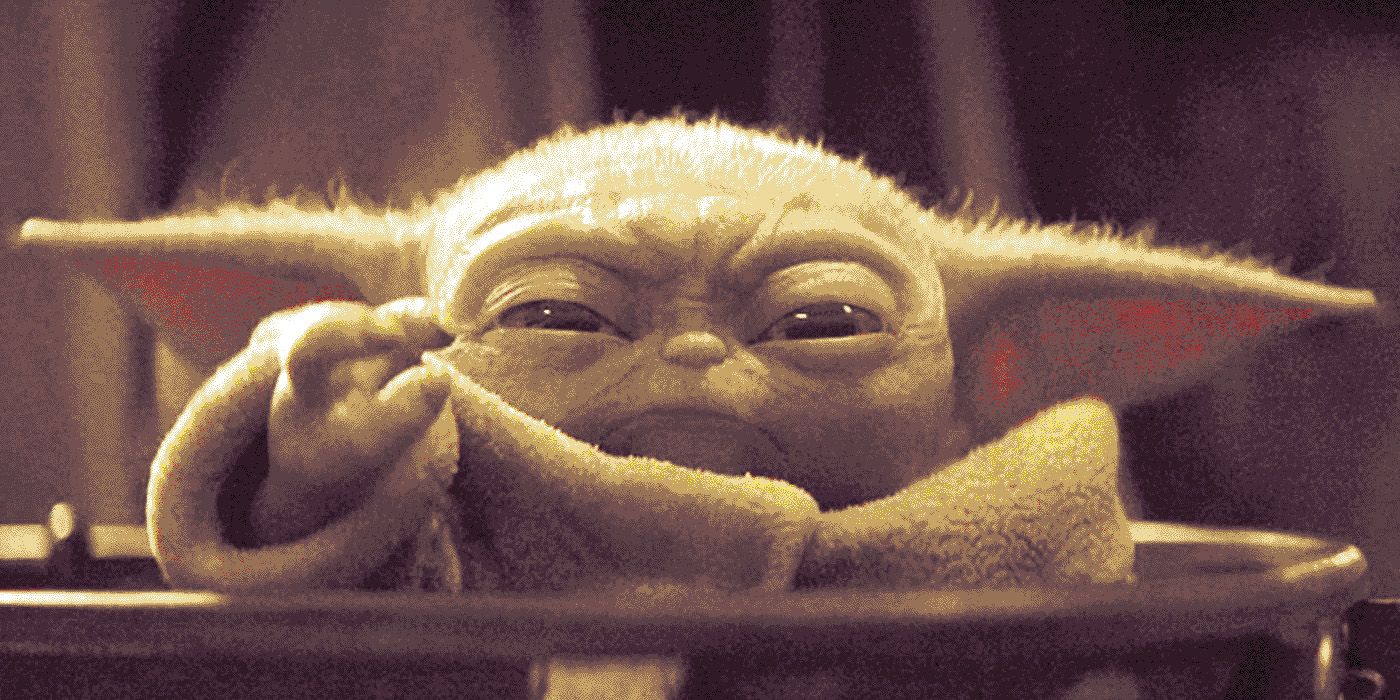Warning: The following contains SPOILERS for Episode 7 of The Mandalorian, "The Reckoning."
Disney+'s Star Wars TV Series The Mandalorian makes a powerful statement about nature versus nurture in its penultimate episode "Chapter 7: The Reckoning." All season long, "the Child" — or as the internet has dubbed him, "Baby Yoda" — has witnessed his travelling companion Dyn Jarren, the titular Mandalorian bounty hunter, commit violent acts. Often the Mandalorian is forced into violence to protect the vulnerable, and seemingly-innocent, Baby Yoda. Throughout the season, the Child has demonstrated his own capacity to defend himself and others through the use of the Force. In Chapter 7, however, viewers get to see the extent of the young Force-user's abilities — two extremes that represent the light and dark sides of the Force.
Baby Yoda is the main catalyst in The Mandalorian: he drives the narrative action forward, and he offers viewers a reason to be emotionally invested in the show. Baby Yoda is wanted by a remnant of the Galactic Empire — but what purpose he may serve to the Imperial forces remains unknown. The Child has demonstrated he is especially Force sensitive. One popular theory circulating the internet is that the Empire wants Baby Yoda's Midichlorians. Another possibility is that the Empire wants to groom Baby Yoda and bring him over to the dark side.
Although he is 50 years old, Baby Yoda is a child. Like all children, he is impressionable and doesn't fully understand the events occurring around him. "Chapter 7: The Reckoning" reminds viewers of Baby Yoda's naïvety, and his impressionable nature, with a scene in which Baby Yoda attacks Cara Dune with the Force. The Child has used his Force abilities multiple times this season, typically to assist the Mandalorian (there is even a humorous moment in episode 6 in which Baby Yoda raises his hand to use the force on a droid, then looks at his hand in disbelief when its head explodes; in reality, the Mandalorian had shot the droid). When Baby Yoda raises his hand while watching Cara and Dyn arm wrestling in episode 7, the audience expects the Child to help his companion, Dyn win the wrestle. When it instead becomes apparent that Baby Yoda is strangling Cara, the moment is genuinely shocking — and more than a little disturbing.
Dyn is quick to correct the Child, telling him to stop hurting Cara because she is a friend. Those present — Dyn, Cara, and Kuiil — are unsure what they witnessed; however, viewers will recognize the parallel to Darth Vader and his iconic Force choking scene in A New Hope. Later in the episode, Baby Yoda uses the Force again: this time, to heal the dying Greef Carga. This time, his companions respond with wonder to the Child's action, rather than fear and aggression. The message of the episode is clear: Baby Yoda is just learning about the world around him. Although he has demonstrated altruistic impulses in the past, he's not necessarily inherently good or evil. He'll need guidance as he develops his abilities,
Baby Yoda's lessons in morality are echoed by IG-11's own rehabilitation arc. After being destroyed by Dyn in the first episode, the droid is discovered by Kuiil, who repairs and reprograms it. When the Mandalorian warns Kuiil about the droid's dangerous nature, Kuiil sagely responds "Droids are not good or bad — they are neutral reflections of those who program them." Perhaps the same is true of people too.


